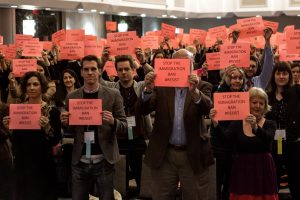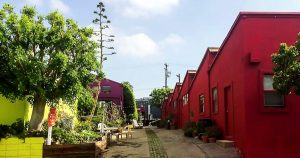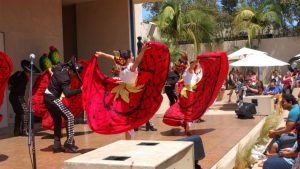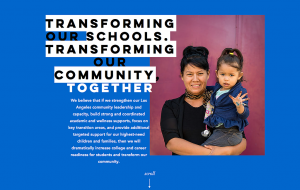CAA News Today
CAA Goes to Washington
posted by CAA — March 07, 2018
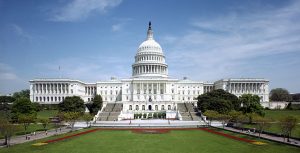
See live updates on Twitter and Instagram
Early next week, staff members from CAA will be attending Arts Advocacy Day and Humanities Advocacy Day in Washington, DC.
ARTS ADVOCACY DAY
March 12 – March 13, 2018
Hosted by Americans for the Arts
Arts advocates from across the country convene in Washington, DC for Americans for the Arts’s annual Arts Advocacy Day each year. Arts Advocacy Day brings together a broad cross section of America’s cultural and civic organizations, along with more than 700 grassroots advocates from across the country, to underscore the importance of developing strong public policies and appropriating increased public funding for the arts. Learn more.
HUMANITIES ADVOCACY DAY
March 11 – March 13, 2018
Hosted by National Alliance for the Humanities
Humanities Advocacy Day provides the opportunity to connect with a growing number of humanities advocates from around the country. Together, advocates will explore approaches to year-round advocacy on college campuses and in local communities while also preparing for Capitol Hill visits. On March 13, they will visit House and Senate offices to make a persuasive case for federal funding for the humanities. Learn more.
WHY IS CAA ATTENDING?
For two years in a row, we’ve offered our complete and total opposition to efforts to eliminate funding for the National Endowment for the Arts (NEA), the National Endowment for the Humanities (NEH), and other domestic programs that fund education, arts, and humanities initiatives, as outlined in the 2018 and 2019 White House budget proposals.
Over the last year, we’ve also solicited feedback from our members on a variety of issues that impact the arts, humanities, and higher education, including:
- Gun control and the proposal to arm teachers
- Tax reform and its effect on higher education
- Embracing and supporting diverse voices in the arts
- Hiring standards for part-time faculty
- Removing or preserving Confederate monuments
- The Muslim Travel Ban
For more on our advocacy efforts, click here.
We encourage you to be vocal about your support for the arts and humanities next week (and beyond!). Click here to access the CAA Arts and Humanities Advocacy Toolkit.
CAA Statement on Deaccession of Artworks at La Salle University
posted by CAA — January 24, 2018
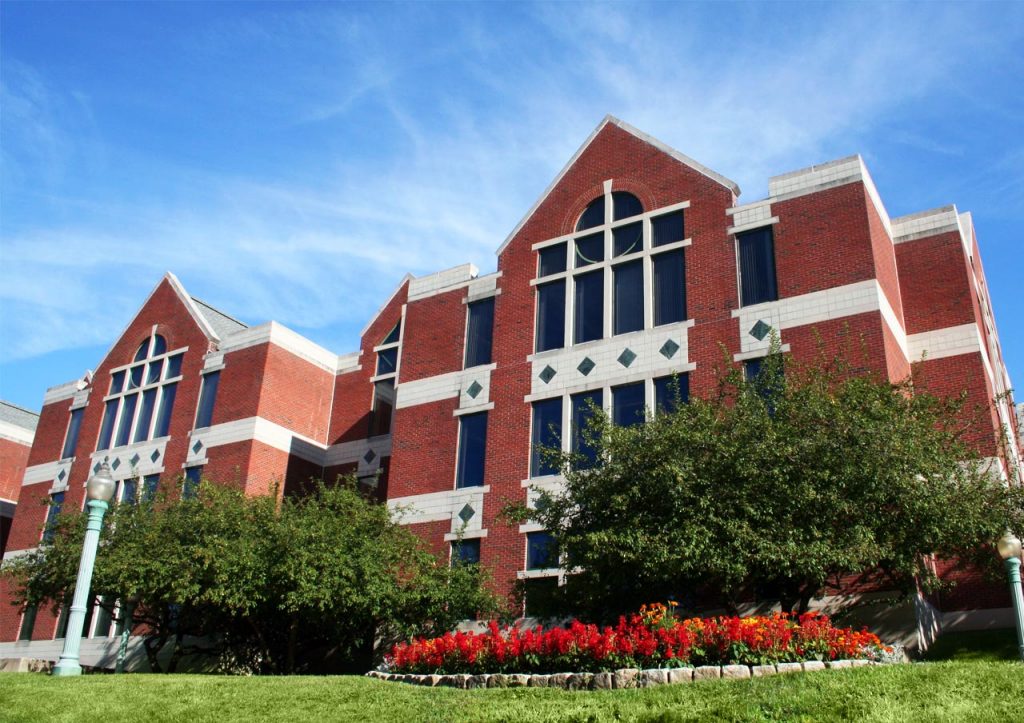
La Salle University. Image: Wikimedia Commons
CAA, the largest professional organization of visual artists and art historians, was disappointed to learn that La Salle University in Philadelphia plans to sell part of its art collection at the university’s museum. The university is currently planning to sell 46 works of art at a Christies’s auction estimated to bring in between $4.8 and $7.3 million. The university states that the proceeds from the sale will be “invested in the future of our university to help grow and to be financially sustainable. More importantly, we are really looking to enhance student experience and student outcome.” A university spokesperson further points out that the decision to deaccession the works was the result of months of careful consideration by its Board of Trustees, which examined all of the university’s assets and made a decision that select artworks from their art museum could be reallocated for funding the university’s new strategic five-year plan. Read the Artnet News story about the deaccession.
Similar to other cultural professional organizations, CAA has set guidelines for conditions under which items in museums collections are to be divested or deaccessioned. CAA Executive Director Hunter O’Hanian said, “We join our colleagues from the American Alliance of Museums and Association of Art Museum Directors in questioning this sale. CAA’s guidelines make it clear that art held by museums is not to be considered ‘an asset’ in the traditional sense. Museums should sell work from their collection only under very limited circumstances. And best practices dictate that the sale of the proceeds should only be used to acquire new works of art. We hope that the university Board of Trustees rethinks this position about selling the works that it holds in public trust.”
Call for Contributions to RAAMP (Resources for Academic Art Museum Professionals)
posted by CAA — December 12, 2017
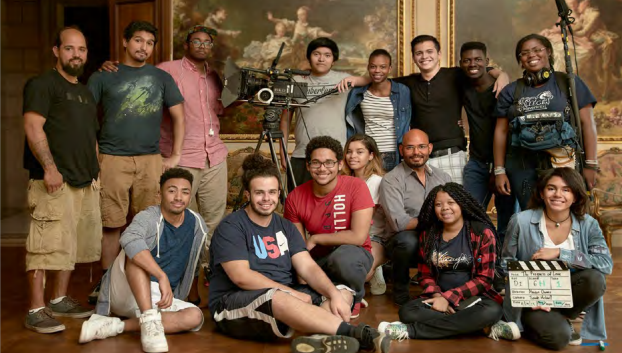
Honor students from The Cinema School at The Frick Collection, 2016, from AAMD’s “Next Practices in Diversity & Inclusion” PDF in RAAMP. Photo: Michael Bodycomb
Given the spirited discussion taking place on a number of curatorial listservs and websites, RAAMP (Resources for Academic Art Museum Professionals) invites submissions to add to its publicly accessible online archive for individuals working in academic art museums.
Examples include museum strategic plans, campaigns for outreach to campus communities, and strategies for diversity and inclusion in the academic art museum, and include PDFs, links, videos, and more.
Click here to submit resources.
You can also browse the existing resources, submit updates, or join the conversation on Humanities Commons.
What is RAAMP?
RAAMP serves to promote scholarship, advocacy, and discussion related to the role of academic art museums and their contribution to the educational mission of their parent institutions. To this end, it functions as a publicly accessible online repository; it collects, stores, and shares resources.
RAAMP is a project of the CAA with support from The Andrew W. Mellon Foundation.
Support the CAA Community on #GivingTuesday
posted by CAA — November 28, 2017
As we celebrate the spirit of generosity on #GivingTuesday, we’re highlighting LA-based organizations to consider giving to alongside CAA.
We thank you for your support!
COLLEGE ART ASSOCIATION
This past year, we fought for the causes of our members and those in the arts and culture field at large. Your contribution helps to ensure that CAA continues our mission in promoting the visual arts and their understanding through advocacy, intellectual engagement, and a commitment to the diversity of practices and practitioners. The larger our voice, the larger the impact we will have.
18TH STREET ARTS CENTER
One of our recommended 2018 conference stops, the 18th Street Arts Center is one of the top twenty artist residency programs in the US. They value art-making as an essential component of a vibrant, just, and healthy society where the creative process is just as important as the outcome.
MUSEUM OF LATIN AMERICAN ART (MOLAA)
Another one of our 2018 conference stops, the Museum of Latin American Art (MOLAA) is the only museum in the United States dedicated to modern and contemporary Latin American art, and serves the greater Los Angeles area.
PROMESA BOYLE HEIGHTS
Promesa Boyle Heights is a collective of residents, youth, schools, and community organizations united in lifting community voices and working together to transform conditions and improve opportunities for students and families in Los Angeles.
The Art Bulletin Reviews Online Collection Catalogs
posted by CAA — July 13, 2017
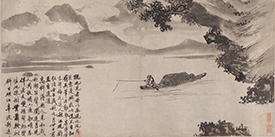
Shen Zhou, Solitary Angler on an Autumn River, 1492, handscroll, ink on paper, 13½ x 411½ in. (34.4 x 1045 cm), frontispiece: 11¾ x 33 in. (30 cm x 83.8 cm). Seattle Art Museum, Gift of Karen Wang, 97.80 (artwork in the public domain; photograph provided by the Seattle Art Museum)
In its June 2017 issue, The Art Bulletin is publishing reviews of six online collection catalogs issued by the National Gallery of Art, Washington DC; the Seattle Art Museum; the Arthur M. Sackler and Freer Gallery of Art, Washington DC; the Art Institute of Chicago; the Tate, United Kingdom; and the Walker Art Center, Minneapolis. This is the first time the quarterly journal has devoted its reviews section to digital scholarship.
Stephen H. Whiteman’s review of the Seattle Art Museum’s Chinese Painting & Calligraphy catalog is available now in an enhanced digital version, published on the Scalar platform and developed in collaboration with Nancy Um and Lauren Cesiro. The open-access project is at http://scalar.usc.edu/works/samosci/index.
CAA Presents a Fair Use Workshop in Richmond
posted by CAA — April 10, 2017
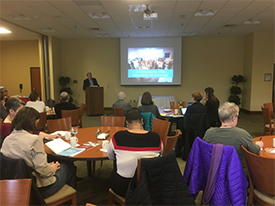
Peter Jaszi speaks to participants at a fair use workshop in Richmond, Virginia, March 24, 2017.
On Friday, March 24, the University of Richmond Museums, Virginia, hosted a CAA Fair Use Workshop, co-sponsored with the Virginia Museum of Fine Arts Statewide Program, and made possible with a grant from the Andrew W. Mellon Foundation. Elizabeth Schlatter, CAA Vice President for the Annual Conference, and Deputy Director and Curator of Exhibitions at the University of Richmond Museums, led the planning effort to bring over 40 artists, museum professionals, archivists, professors, librarians, and communications experts to the daylong workshop.
The program was led by Hunter O’Hanian, CAA’s Executive Director, and Peter Jaszi, Professor of Law at American University, and one of the two lead principal investigators on the project. After a round of introductions by attendees, Jaszi began the day with an introduction to the doctrine of fair use, followed by a presentation by O’Hanian about CAA’s four-year fair use initiative and the methodology employed to develop the Code of Best Practices in Fair Use for the Visual Arts. The workshop continued with a focus on fair use in art museums, including when it can be invoked in exhibition projects, publishing, and online activities. During a working lunch, Jaszi and O’Hanian led discussions on reliance on fair use in teaching, publishing, and making art, and concluded the day with a discussion about fair use in libraries and archives.
Catherine G. OBrion, the Librarian-Archivist at the Virginia State Law Library, wrote afterwards, “I have a much better understanding of the legal standing of fair use, its intent, and how I can defend relying on it to my in-house counsel and others….One of the most useful workshops I’ve attended.” The workshop was followed by a reception at the University Museums for all CAA members in the local area.
CAA executive director O’Hanian also met with two University of Richmond classes the day before, one a museum studies seminar and the other a class on contemporary art and theory. The undergraduates benefited from O’Hanian’s advice on curating exhibitions, organizing public programs, surviving and thriving as a visual artist, and applying for artists’ residency programs.
A CAA Road Trip
posted by Janet Landay, Program Manager, Fair Use Initiative — October 18, 2016
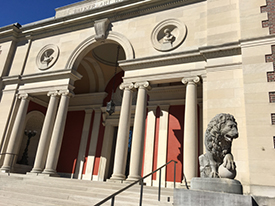 Bowdoin College Museum of Art in Brunswick, Maine (photograph by Janet Landay)
Bowdoin College Museum of Art in Brunswick, Maine (photograph by Janet Landay)In late September, Hunter O’Hanian and I had the pleasure of spending a weekend at Bowdoin College in Brunswick, Maine, to attend two CAA events hosted by Anne Goodyear, codirector of the Bowdoin College Museum of Art and a former CAA president. We arrived at the picturesque New England campus on a beautiful fall day. The college’s art museum, one of the oldest in the country, anchors the western edge of the quad, its neoclassical façade presiding gracefully over green lawns and majestic trees where students played Frisbee, read, or walked across campus. It was a perfect weekend to welcome CAA members to campus.
The first group arrived that Saturday afternoon to attend a CAA member reception, the first of several Hunter has planned around the country to provide an opportunity for him to meet with members in a relaxed setting and talk about CAA. The event began with a tour of the Bowdoin College Museum of Art given by Anne and her husband, the museum’s codirector, Frank Goodyear. Immediately following, we all walked a block away to Anne and Frank’s house to enjoy some wine and cheese on their back patio. The fifteen or so participants hailed from several schools and museums in addition to Bowdoin—Colby College, Bates College, the Portland Museum of Art, and the Farnsworth Art Museum—and included art historians, artists, librarians, and independent scholars.
Members spoke in turn about their most memorable CAA experiences: attending a first conference, interviewing and getting a job, meeting old friends, or networking with scholars in their fields. Hunter then shared thoughts about his goals for CAA based on what he has learned from members since he became executive director in July. He observed the importance of connectivity—how to keep CAA members in touch with issues in the field, but especially how to keep them in touch with each other. And he described many of the changes members will experience at the next Annual Conference, including a focus on personal experience, captured by a new theme for the meetings, myCAA.
On Sunday morning, several of the same CAA members returned, joined by others from around the state, for a half-day workshop about copyright and fair use. Peter Jaszi, a co–lead investigator on CAA’s Fair Use Initiative, came from Washington, DC, to Bowdoin to lead the program, which focused on how visual-arts professionals can use CAA’s Code of Best Practices in Fair Use for the Visual Arts in their work. Following an introduction to copyright and fair use, the workshop began with a look at how museum professionals can use the Code when employing copyrighted materials in their work.
Participants had been asked to bring real-life questions with them. Thus, a museum director wanted to know whether his museum could allow photography in the galleries of works still protected by copyright. A curator described a challenge she had in getting an image for a catalogue from a museum in central China. When she received no reply from the museum, she resorted to scanning the image from another book. Is that fair use? Other questions involved loan forms, credit lines, and online projects.
As the day continued, the program moved on to address questions from professionals in other areas: librarians and archivists, professors and teachers, artists and independent scholars. Can a faculty member use images in class that she got from a flash drive she had received from a foreign museum? What kind of credit information is necessary for a blog about films? Is Shepard Fairey’s image of Obama a good case study for students learning about fair use? How should the institutional repository on a college campus view the copyright protection of yearbook photographs? By the end of the afternoon, a remarkable range of questions had been discussed, and the forty participants came away with a much greater understanding of fair use and how to rely on it in their work.
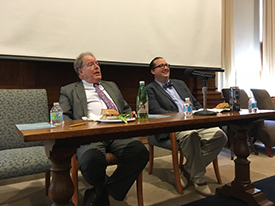 Peter Jaszi and Kyle Courtney at CAA’s fair-use town hall at Harvard University (photograph by Janet Landay)
Peter Jaszi and Kyle Courtney at CAA’s fair-use town hall at Harvard University (photograph by Janet Landay)On Monday, Hunter, Peter, and I were in Cambridge, Massachusetts, to join Kyle Courtney, a copyright specialist in Harvard’s Office for Scholarly Communication, for a fair-use town hall on the campus of Harvard University. As in Maine, Peter began the program with an introduction to fair use, and I followed with a description of CAA’s Fair Use Initiative. Kyle spoke about a program he directs at Harvard that trains librarians to be “first responders” to users’ questions about fair use. Although relatively new, the program has proven to be an effective way to support and teach visual-arts professionals about fair use. It is now being replicated on other university campuses. The event was then opened to questions from the sixty-five members of the audience, which Peter and Kyle discussed in depth.
Many of the topics were similar to those that had been addressed at the Bowdoin workshop, but a new subject emerged as well: advocacy. Does a professor who has had a manuscript accepted have any recourse when her publisher requires signed author agreements stating that all images had been cleared for publication and all fees paid? The answer is yes; she can ask her publisher to read CAA’s Code and explain that many, if not all, of her uses of images comply with the doctrine of fair use. While the effort may not succeed (though CAA has several success stories on file), over time it will familiarize publishers with the principles outlined in the Code. Changes have already taken place, in large part due to this kind of challenge from users. Yale University Press now accepts fair-use defenses from its authors who are publishing monographs; the Robert Rauschenberg Foundation embraced a fair use policy for that artist’s work; and CAA not only encourages its authors to consider whether or not their uses are fair, but it also indemnifies authors against lawsuits about works used under fair use.
The program concluded with a reminder that CAA is happy to answer questions about fair use; please don’t hesitate to contact us at nyoffice@collegeart.org.
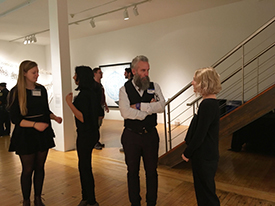 The CAA member reception at Massachusetts College of Art and Design (photograph by Janet Landay)
The CAA member reception at Massachusetts College of Art and Design (photograph by Janet Landay)Later on Monday, Hunter and I joined another group of CAA members at the Massachusetts College of Art and Design for a wine-and-cheese reception at the school’s President’s Gallery and Bakalar and Paine Galleries. Attendees included a wide range of members, from professors who have belonged to the association for thirty years to new members just graduating from MFA programs. Lisa Tung, the gallery’s director and curator, kicked off the event with a tour of two exhibitions currently on view, Encircling the World: Contemporary Art, Science, and the Sublime and Women’s Rights Are Human Rights: International Posters on Gender-Based Inequality, Violence, and Discrimination. Hunter, who is a former vice president for development at MassArt, then invited participants to speak about how CAA is valuable to them. He emphasized the importance of hearing from members so that CAA can support them as fully as possible in this rapidly changing world.
CAA’s road trip continued in early October with another member’s reception in Portland, Oregon. Later this month we will convene a fair-use workshop in Seattle, Washington. More events are planned for early next year in Georgia and Virginia. Stay tuned!
The Bowdoin College fair-use event was organized by the Bowdoin College Museum of Art and CAA, with funds provided by the Andrew W. Mellon Foundation. The Harvard University fair-use event was organized by Harvard’s Office for Scholarly Communication, thanks to the generous support of the Arcadia Fund, and by CAA, with funds provided by the Mellon Foundation.
RAAMP—A Digital Resource for Academic Museum Professionals
posted by CAA — October 06, 2016
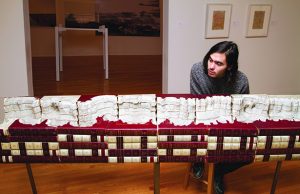 Guy Laramée, The Grand Library, 2004. Altered book, pigment, metal stand, 96 x 21 x 44 inches. Courtesy of the artist and JHB Gallery. Courtesy of University of Richmond Museums, Virginia. Photo: Gordon Schmidt/University of Richmond Communications.
Guy Laramée, The Grand Library, 2004. Altered book, pigment, metal stand, 96 x 21 x 44 inches. Courtesy of the artist and JHB Gallery. Courtesy of University of Richmond Museums, Virginia. Photo: Gordon Schmidt/University of Richmond Communications.RAAMP (Resources for Academic Art Museum Professionals) is an online repository and forum that collects, stores, and shares resources to promote scholarship, advocacy, and discussion related to the role of academic art museums and their contribution to the educational mission of their parent institutions. RAAMP aims to strengthen the educational mission of academic museums and their parent organizations, and is oriented toward colleagues at academic art museums as well as university and other museum colleagues. RAAMP is a project of CAA made possible with a generous grant from the Andrew W. Mellon Foundation.
The principal investigators for RAAMP are N. Elizabeth Schlatter, deputy director and curator of exhibitions at the University of Richmond Museums in Virginia and an officer of CAA’s Board of Directors; and Celka Straughn, Andrew W. Mellon Director of Academic Programs at the University of Kansas’s Spencer Museum of Art and a member of CAA’s Museum Committee. Schlatter says, “Art museums at colleges and universities today are creating some of the most dynamic connections to their academic communities. RAAMP creates a virtual place to share these accomplishments and gain inspiration from colleagues. Academic museums can use examples created by their peers and posted on RAAMP to enhance their offerings to faculty and students.”
Straughn adds, “They can find curricular materials utilizing museum resources to emphasize critical thinking skills or sample reports that demonstrate and quantify how a campus museum contributes to its parent institution. RAAMP is also a place to promote professional development activities, to find research related to academic museums, and to engage in discussions with fellow professionals.”
RAAMP was created in response to a 2013 CAA Annual Conference session organized by the organization’s Museum Committee. Attendees at the session expressed a need to have a digital space where they could easily share information and strategies for communicating how their academic museums contribute to the educational mission of their parent institutions.
RAAMP would not be possible without the help of its partner organizations: Association of American Museum Curators (AAMC), Association of American Museum Director (AAMD), and Association of Academic Museums & Galleries (AAMG), and representatives from the following US-based academic museum stakeholders:
The Art Galleries at Lafayette College, Bowdoin College Museum of Art, The Fowler Museum at the UCLA, Galleries of Contemporary Art at the University of Colorado, Colorado Springs; The Hood Museum at Dartmouth University, Lowe Art Museum at the University of Miami, Neuberger Museum at SUNY Purchase College, Samuel P. Harn Museum of Art at the University of Florida, Schnitzer Museum at the University of Oregon, Smart Museum of Art at the University of Chicago, Spelman College Museum of Art, Spencer Museum of Art at the University of Kansas, University of Iowa Museum of Art, University of Richmond Museums
Visit the RAAMP website to learn more.
Visit the RAAMP submissions page to submit materials.
CAA Receives Mellon Grant to Support Online Resource for Academic Art Museums
posted by Nia Page — July 30, 2015
The College Art Association (CAA) has been awarded a $132,600 grant from the Andrew W. Mellon Foundation to support the development of Resources for Academic Art Museum Professionals (RAAMP), a free, publicly accessible website that will collect, store, and share resources for professionals in academic art museums. RAAMP will promote scholarship, advocacy, and discussion related to academic art museums and their contributions to the educational mission of their parent institutions. CAA and its Museum Committee will develop RAAMP and manage its peer-generated content with the assistance of project partners, which include the Association for Academic Museums and Galleries (AAMG) and the Association of Art Museum Curators (AAMC).
Linda Downs, CAA executive director, said, “The RAAMP project was initiated by the CAA Museum Committee members N. Elizabeth Schlatter, Deputy Director and Curator of Exhibitions, University of Richmond and Celka Straughn, Andrew W. Mellon Director of Academic Programs at the Spencer Museum of Art who recognized the professional needs of academic art museum to share resources in order to better integrate museum collections into interdisciplinary study through a social community system. CAA is excited about this important initiative that will provide a prototype for similar forums.”
“Through its College and University Art Museums program, the Mellon Foundation has been a long-term supporter of the integration of college and university art museums into the curriculum and research cultures of their host institutions,” said Mariët Westermann, vice president of the Mellon Foundation. “We are therefore pleased to provide a grant to CAA for the creation of an online repository and exchange hub that will further strengthen the collaboration between academic museums and their campus communities.”
RAAMP aims to strengthen the educational mission of academic museums and their parent institutions by providing a dynamic repository of resources, by functioning as a site for news and information, and by supporting public discussion through online forums. The anticipated primary users of RAAMP include academic museum staff: administrators, educators, curators, directors, and conservators. The site would also be a significant asset for university and college administrators, faculty and staff in art and art-history departments, undergraduate and graduate students, and scholars of academic museums. Because RAAMP’s content addresses particular demographic groups—higher education and the visual arts—that are also served by nonacademic museums, the project would be valuable to museum professionals from any institution or background.
RAAMP would specifically benefit users seeking publications, information, research, case studies, professional development, and networking opportunities. Support from the Mellon Foundation will help CAA to determine types of content that would be most beneficial to RAAMP’s audience and contributors, how best to deliver and share this content, and how to facilitate dialogue related to the project’s mission.
DeWitt Godfrey, CAA president and professor of art and art history at Colgate University, said, “This is an important step for the Association to strengthen ties with academic art museums throughout the United States.”
RAAMP was conceived during a 2013 CAA Annual Conference session organized by the Museum Committee, titled “The Position of Academic Programs in Campus Art Museums: What, Why, Who, and Where To?” Session attendees expressed the need to better and more efficiently share information, strategies, and best practices for communicating academic museums’ educational contributions to their parent institutions. Many museums have created innovative programs and practices to serve their campus communities and fully integrate their collections and activities into the academic mission of their college or university. Museums have also worked to apply quantitative and qualitative metrics for mission success.
Leading the project as principal investigators will be: N. Elizabeth Schlatter, deputy director and curator of exhibitions at the University of Richmond Museums in Virginia and a member of CAA’s Museum Committee; and Celka Straughn, Andrew W. Mellon Director of Academic Programs at the University of Kansas’s Spencer Museum of Art and a member of CAA’s Museum Committee. “We are excited to work with colleagues to further develop this accessible resource that reflects that many innovative activities happening at academic museums today. We hope it will serve academic art museums to promote collaboration and demonstrate their educational and scholarly contributions.”
About CAA
The College Art Association is dedicated to providing professional services and resources for artists, art historians, and students in the visual arts. CAA serves as an advocate and a resource for individuals and institutions nationally and internationally by offering forums to discuss the latest developments in the visual arts and art history through its Annual Conference, publications, exhibitions, website, and other programs, services, and events. CAA focuses on a wide range of advocacy issues, including education in the arts, freedom of expression, intellectual-property rights, cultural heritage and preservation, workforce topics in universities and museums, and access to networked information technologies. Representing its members’ professional needs since 1911, CAA is committed to the highest professional and ethical standards of scholarship, creativity, criticism, and teaching. Learn more about CAA at www.collegeart.org.
For more information please contact Nia Page, CAA director of membership, development, and marketing.
Govenor proposes closure of the Illnois State Museum
posted by CAA — June 16, 2015
Allison J. Cywin of the Visual Resource Center at the University of Massachusetts in Dartmouth sent the following email on June 15, 2015.
Govenor proposes closure of the Illnois State Museum
I thought I would share the following concern. The Govenor of Illnois wants to closed the state museum. http://northernpublicradio.org/post/rauner-moves-forward-state-facility-closure-plans Please express your concerns and sign the petition (http://petitions.moveon.org/sign/governor-rauner-dont.fb48?source=s.icn.fb&r_by=5646051)
to support the museum.
and spread the news.



